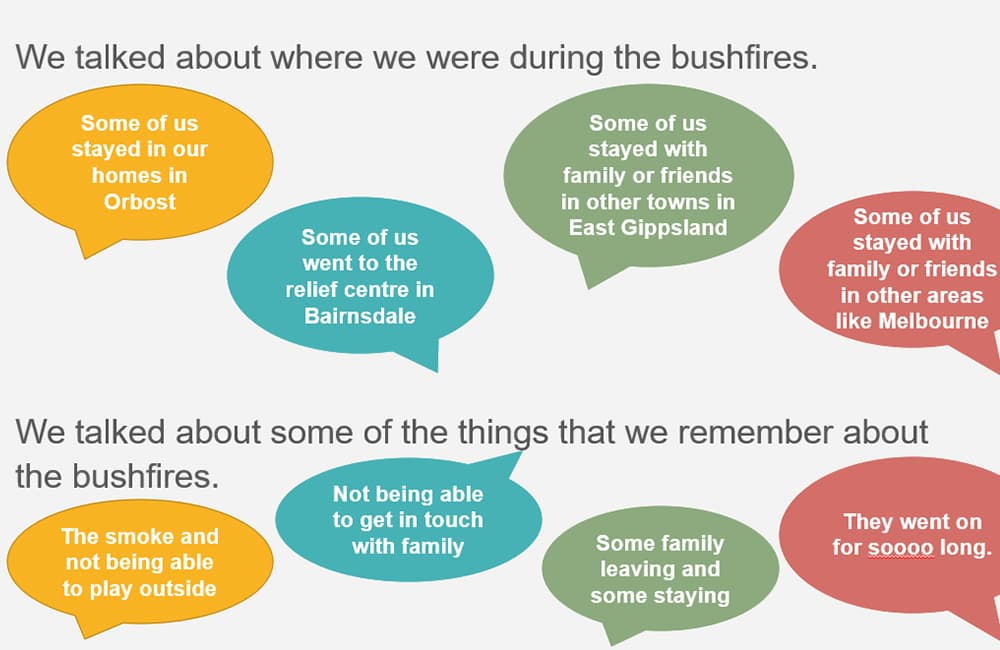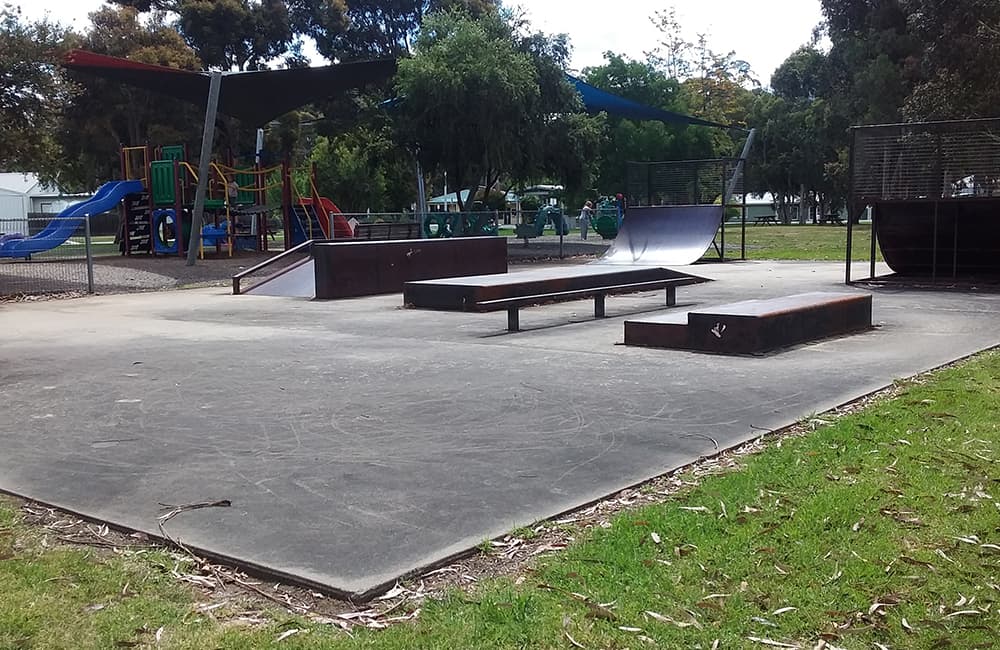Telling stories in Orbost, Victoria

Photo: : A page from the storybook
expressing the children’s thoughts and feelings about bushfires.
Credits: Save the Children
Primary school-aged children joined in activities that included discussing their experiences with the bushfires, reflecting on what made them feel safe, learning about their rights, and having fun.
During the program they were visited by representatives from Bushfire Recovery Victoria and the Orbost Community Recovery Committee. The children learned about how different groups are helping the community recover from the bushfires, and they also had an opportunity to share their experiences and ideas for helping children feel safe and supported during emergencies.
The artwork produced by the children was displayed at the Bushfire Recovery Hub so other groups who used the space could see what they were learning. They also created a storybook, detailing what they learned, their thoughts and feelings about the bushfires, and the needs of children during emergencies.
Their ideas included having child friendly spaces in relief centres, online activities for when they can’t go outside, and making the language of emergency communications more child friendly.
Creating a safe space in Cann River, Victoria
 Photo: The current Cann River Skatepark is very basic.
Photo: The current Cann River Skatepark is very basic.
Credits: Save the Children
In Cann River, primary and secondary school-aged children produced a video and written report capturing their feedback for the Community Recovery Committee.
One of their recommendations was for a redevelopment of the Cann River skatepark. The current skatepark is very basic, and they believe a redesign will attract more children and young people and provide a safe space to have fun, make friends, and learn new skills. Safe spaces for children to have fun and just be kids are especially important in communities still recovering from the trauma of a major disaster.
Save the Children partnered with skatepark design company Baseplate to conduct a consultation and assessment project. Many of the children from Our Voice attended the consultation and shared their ideas with the Baseplate consultant. A report will now be developed to share with local government and other key stakeholders.
Using emerging technology in Shoalhaven, NSW
Photo: Children interview each other for the video.
Credits: Save the Children
Grade 5 and 6 students and key council and recovery stakeholders came together for a Learning Exchange at the Emergency Operations Centre. The Our Voice group got to tour the centre and learn how different agencies coordinate responses during an emergency.
The children engaged in facilitated two-way discussions with stakeholders about their recommendations, which included having somewhere young people can connect during emergencies; more affordable insurance so people don’t feel the need to put themselves in dangerous situations to protect their uninsured property; and having youth ambassadors to represent the voices of children and young people.
These recommendations were communicated using emerging technologies, including a 360-degree video which was viewed by stakeholders using virtual reality headsets.